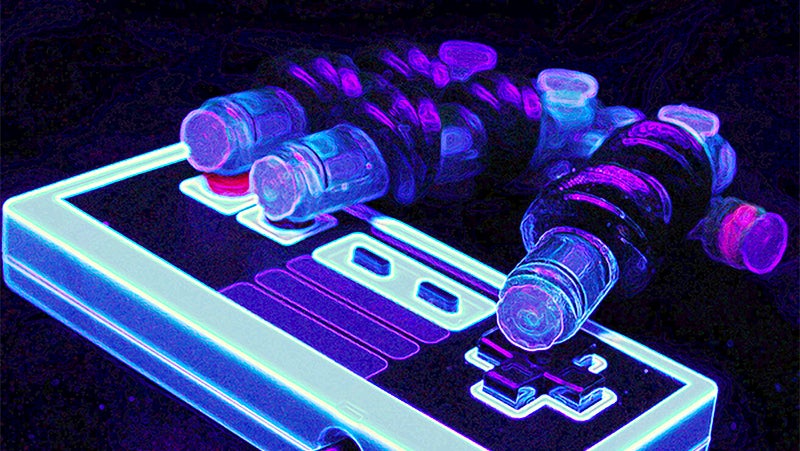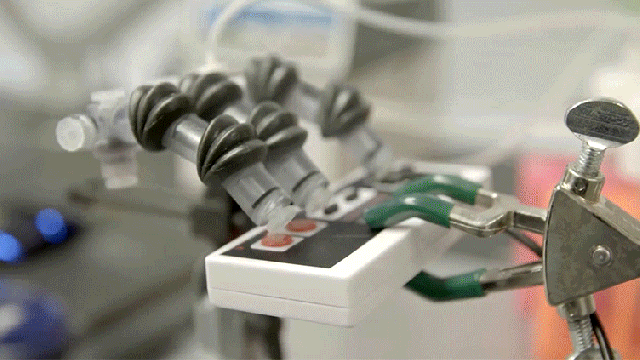The idea that robots will one day become self-aware and start a war to wipe out humanity is laughable. They’re instead going to slowly take over every last job until the world’s population is unemployed and unable to shop at automated grocery stores, so we all starve and die off. And not even those who eke out a living on Twitch speed-running video games will be safe it now seems.
Another assumption about the future of automatons, based on movies like Star Wars and The Terminator, is that robots will always be made from metal and look like walking suits of armour. It’s an approach that makes them durable and strong — ideal for waging a war across space or time — but not exactly safe when interacting with humans. Visit a factory that relies on robotic arms for various tasks and you’ll find barriers that prevent human workers from getting anywhere close to them because if a robot collides with a human, the skin bag full of flesh and bones loses every time.
A team of researchers at the University of Maryland is working on an entirely different approach to robotics that has them built from materials that are similar to the soft and squishy human body. It’s a field known as soft robotics, and it’s slowly starting to catch on in mainstream media. In the animated film, Big Hero 6, an inflatable robot known as Baymax was designed to dole out medical diagnoses and treatments and interact with patients without ever putting them in harm’s way, the same way getting hit with a beachball won’t put you in the ER.
Where the University of Maryland researchers have advanced the field of soft robotics is by 3D-printing a fully-assembled and fully-functional soft robotic hand that allows individual figures to be articulated using a single control mechanism. Your typical robot uses either a series of servo motors or pneumatic pistons to activate every point of articulation. That approach allows for precise controls and movements, but it also requires lots of power, lots of programming, and lots of complexity — which also often leads to lots of failures.
The 3D-printed hand created at the university’s Bioinspired Advanced Manufacturing (BAM) Laboratory comes out of the printer with a complete fluidic circuit inside, which is what allows the hand’s digits to actually move. Like inflating a long, limp balloon to make it rigid enough to turn into a balloon animal, fluid pumped through the hand’s fluidic circuit brings it to life. Typically, in soft robotics, a separate pump is needed to pump fluids through every single part that moves, but this hand is powered by just one, and by simply changing the pressure of the pump, specific fingers can be moved.

Applying a low level of pressure moves the first finger, and by applying increasing levels of pressure from there, the hand’s other fingers can be moved too, one-by-one. To demonstrate the effectiveness of the new approach, the researchers paired the hand with an NES controller and used the fingers to press various buttons, including the directional pad. By programming a pattern of low, mid, and high-pressure actuations, the robotic hand was able to successfully complete the first level of Super Mario Bros. on the NES in less than 90 seconds.
The world record for completing the first level of Super Mario Bros. is less than 12 seconds, so the speedrunners of the world have nothing to worry about just yet from this new robot. But it demonstrates another radical new way of thinking about robots. Through the use of 3D printing and soft materials, a fully functional bot can not only be made quickly but affordably as well — and without necessarily sacrificing functionality. If all the robots of the world are one day as squishy as a rotten banana, they’ll also be a lot less scary to interact with, and movies like The Terminator will seem laughably outdated.
